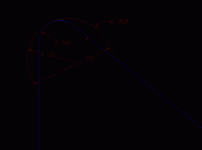I found a very reasonable compromise in my Bosch 1617 router with PreciseBit collets. For a total outlay of around $300, I was pleasantly surprised to get these results. This is not staged, with repeated attempts to get a good result. This is a first try and is typical. The router runs without vibration, even wide open. My inlays are cleaner, sharp corners have less fracturing. My shafts are coming out even smoother with no chatter at all. Of course, I'm limited to 25,000 rpm but I haven't found that to be a problem. FWIW, I rarely use anything smaller than 1/64" bits.
Thanks for a great alternative, Bob!
It's good to know that accuracy can be had for a fairly minimal outlay. Can you compare the loudness of your Bosch to the Kress at full blast? It's also good to know that you can use the 1/64" bits...what kind of feed speed and D.O.C. can you get away with them?
Regards,
Frank

